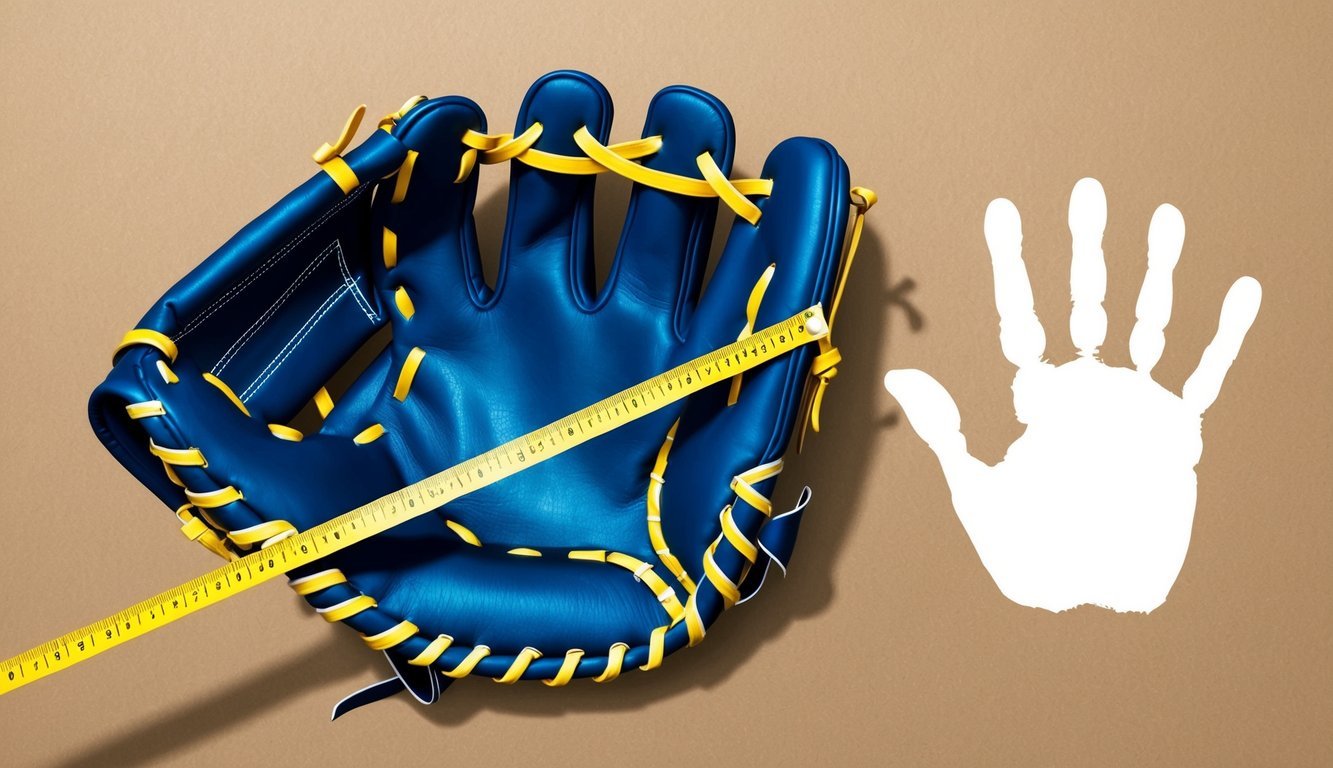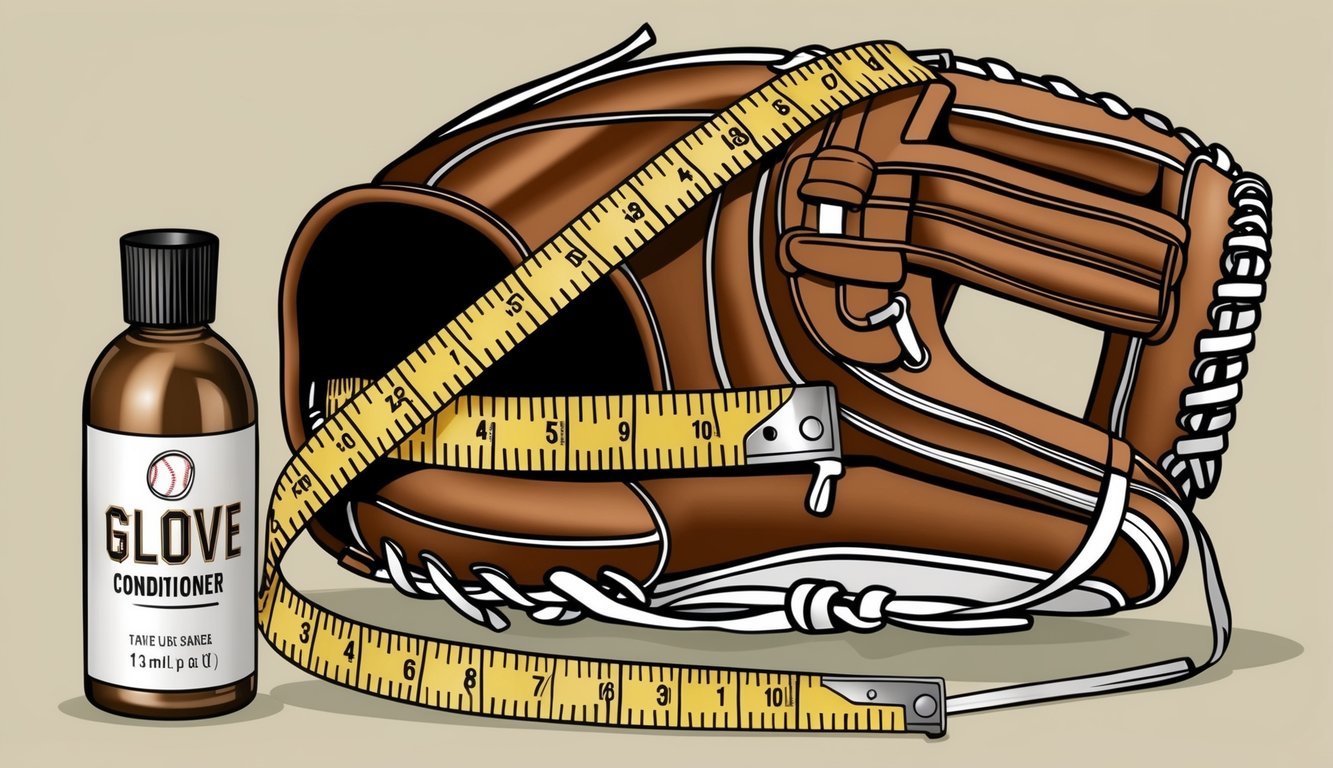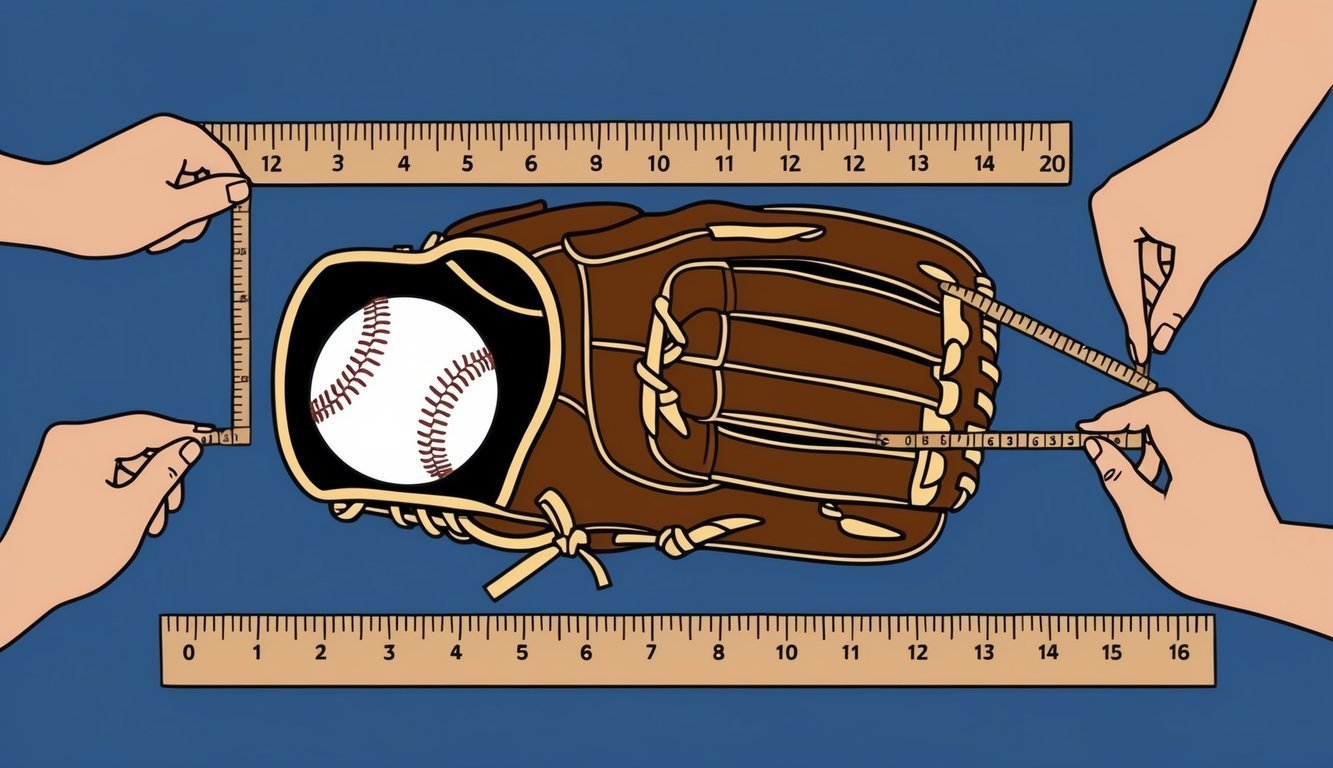Finding the perfect baseball glove can make a huge difference in your game.
A well-fitted glove enhances comfort, improves performance, and boosts confidence on the field.
But how do you measure your hand to get the right size?
To measure your hand for a baseball glove, use a flexible tape measure from the tip of your index finger down to the center of your palm where your wrist begins. This measurement, typically in inches, corresponds to standard glove sizes.
For most adult players, glove sizes range from 11.25 to 13 inches, while youth sizes are usually between 9 and 11 inches.
Remember that different positions may require different glove sizes.
Outfielders and first basemen often prefer larger gloves with deeper pockets, while infielders typically opt for smaller, more maneuverable options.
Understanding Baseball Glove Sizing
Proper baseball glove sizing is crucial for optimal performance on the field.
A well-fitted glove enhances a player’s ability to catch, field, and control the ball effectively.
Glove Sizing Basics
Baseball gloves come in various sizes to accommodate different hand sizes and playing positions.
The size of a glove is typically measured in inches from the top of the index finger to the heel of the glove.
Youth players generally require smaller gloves, ranging from 9 to 11 inches, while adult gloves can extend up to 13 inches for outfielders.
To measure your hand for a baseball glove, start by placing your palm flat on a surface.
Measure from the tip of your index finger to the base of your palm.
This measurement provides a good starting point for selecting the right glove size.
Baseball Glove Size Chart and Fit
Baseball glove sizes vary by position and age group.
Here’s a general size chart:
| Position | Youth Size | Adult Size |
|---|---|---|
| Infield | 9″ – 11″ | 11″ – 12″ |
| Outfield | 11″ – 12″ | 12″ – 13″ |
| Pitcher | 10″ – 11″ | 11.5″ – 12″ |
| First Base | 11.5″ – 12″ | 12″ – 13″ |
| Catcher | 29.5″ – 32″ | 32″ – 34″ |
When trying on a glove, ensure your fingers reach the top comfortably.
The glove should feel snug but not tight.
Make a fist inside the glove to check for proper fit.
A well-fitted glove allows for easy closure and provides enough space for the hand to move naturally.
Measuring Your Hand for the Perfect Glove
Finding the right baseball glove starts with accurate hand measurements.
Proper sizing ensures comfort and optimal performance on the field.
Hand Measurement Techniques
Start by laying your hand flat on a table, palm up.
Use a flexible tape measure to wrap around the widest part of your palm, just below the knuckles.
This gives you the circumference of your hand.
Next, measure from the base of your palm to the tip of your middle finger for hand length.
For baseball-specific measurements, create a “C” shape with your hand.
Measure from the tip of your index finger, along the curve, to the base of your palm.
This mimics how your hand fits inside a glove.
Make sure to measure your dominant hand, as it’s the one you’ll use for catching.
Take multiple measurements for accuracy.
Tools for Measuring Hand Size
A flexible tape measure is ideal for hand measurements.
It curves easily around your palm and fingers.
If you don’t have one, use a piece of string.
Wrap it around your hand, mark where it overlaps, then measure the string with a ruler.
Some sporting goods stores offer hand-measuring tools specifically for baseball gloves.
These often have markings to help match your hand size to appropriate glove sizes.
For precise measurements, consider using a digital caliper.
While not necessary, it can provide exact numbers for hand width and finger length.
Selecting the Right Glove for Your Position

Different positions on the baseball field require specialized gloves to enhance performance.
The size, shape, and features of a glove vary based on the player’s role and specific needs.
Infield vs. Outfield Gloves
Infield gloves are typically smaller and shallower than outfield gloves.
Infielders need quick transfers from glove to throwing hand, so their gloves range from 11.25 to 12 inches.
Shortstops and second basemen often prefer the smallest gloves for maximum agility.
Third basemen and first basemen use slightly larger gloves, around 12 to 13 inches.
These positions require extra reach and a deeper pocket to field hard-hit balls.
Outfield gloves are the largest, measuring 12 to 13 inches.
The extended length helps outfielders catch fly balls and provides a wider pocket for securing the ball during long throws to the infield.
Specialty Gloves for Pitchers and Catchers
Pitchers’ gloves are designed to conceal grip and typically range from 11.5 to 12.5 inches.
They often feature closed webbing to hide the ball from batters.
Catchers use mitts rather than gloves.
These heavily padded mitts measure 32.5 to 34 inches for adult players.
They have a unique shape to help catchers frame pitches and absorb the impact of fast pitches.
Youth catchers’ mitts are smaller, usually 29.5 to 32.5 inches.
This size allows young players to control the mitt while still providing adequate protection.
Features and Considerations for Comfort and Performance

Selecting the right baseball glove involves more than just size.
The glove’s materials, construction, and design elements all play crucial roles in enhancing a player’s comfort and performance on the field.
Material and Webbing Styles
Baseball gloves come in various materials, each offering unique benefits.
Full-grain leather provides durability and a classic feel, while synthetic materials offer lighter weight and quicker break-in times.
Players should consider their position and preferences when choosing.
Webbing styles impact ball control and visibility.
The trapeze web is popular for outfielders, offering a large catching area.
Infielders often prefer I-web or H-web designs for quick ball transfers.
Pitchers may opt for closed webs to hide their grip.
The palm area’s thickness affects feel and protection.
Some players prefer thin palms for better ball feel, while others choose thicker padding for added protection against hard hits.
Padding, Lacing, and Hinges
Proper padding distribution enhances comfort and reduces sting from catches.
Key areas include the palm, fingers, and web.
Well-padded gloves offer protection without sacrificing flexibility.
Lacing quality impacts glove durability and shape retention.
Leather laces typically last longer but may require more maintenance.
Synthetic laces offer weather resistance and easy care.
The hinge design affects a glove’s break-in period and flexibility.
Some gloves feature pre-curved fingers for a more natural feel right out of the box.
Others may need more time to mold to the player’s hand.
Wrist closures provide a customizable fit.
Velcro straps offer quick adjustments, while laced backs allow for a more precise fit.
The right closure ensures the glove stays secure during play.
Breaking In and Caring for Your Glove

A well-fitting baseball glove requires proper break-in and ongoing care to reach its full potential.
This process enhances comfort, flexibility, and performance on the field.
To achieve the best results, focus on the baseball glove pocket location during the break-in process, as this will greatly affect how the glove catches and retains the ball.
Regularly applying glove oil and using a form or ball during storage can help maintain its shape and softness.
Additionally, practicing with the glove will not only speed up the break-in but also allow you to personalize its fit and pocket for optimal performance in games.
The Break-In Process
Start by applying a thin layer of glove oil to soften the leather.
Use a baseball to work the pocket, repeatedly catching and squeezing.
Flex the glove in various directions to increase pliability.
Practice fielding with the new glove during warm-ups.
This helps mold it to your hand’s shape.
Some players wrap the glove around a ball and secure it with rubber bands overnight.
Avoid shortcuts like excessive heat or water, as these can damage the leather.
The break-in period typically lasts a few weeks of regular use.
Patience is key for optimal comfort and performance.
Maintenance and Longevity
After each use, clean your glove with a soft, dry cloth to remove dirt and sweat.
Then, store it in a cool, dry place to prevent mold growth.
Use a glove stand or stuff it with newspaper to maintain its shape.
Periodically condition the leather with a specialized product.
This will keep it supple and prevent cracking.
Avoid over-oiling, as this can weaken the leather structure.
Tighten loose laces promptly to maintain a snug fit.
Also, replace worn laces to ensure optimal control and safety during play.
With proper care, a quality glove can last for many seasons.
